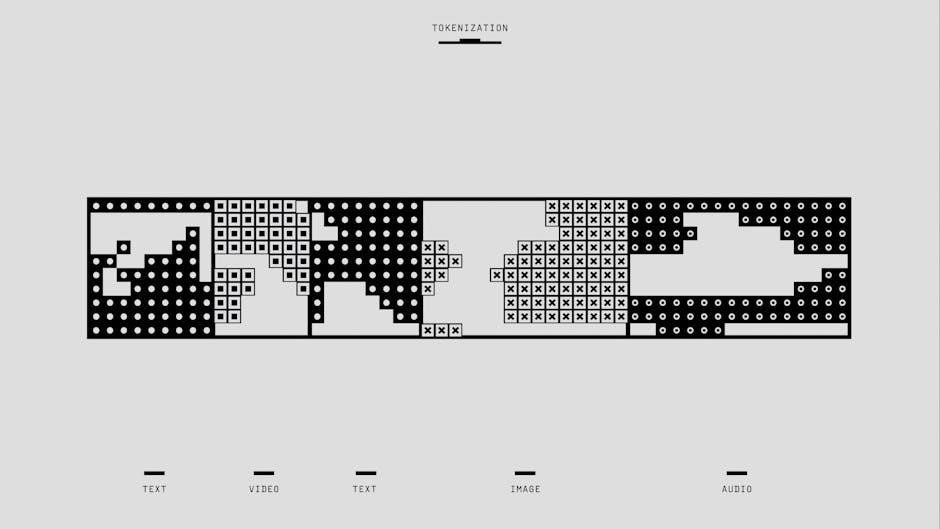Basic mathematics forms the foundation of numerical and problem-solving skills. PDF resources and textbooks provide comprehensive guides, covering essential concepts from arithmetic to algebra and geometry, ensuring a solid educational base.
Importance of Basic Mathematics in Education
Basic mathematics is crucial for developing problem-solving skills and logical reasoning. It serves as the foundation for advanced studies in science, engineering, and economics. PDF resources and textbooks emphasize its role in building a strong academic base. Understanding key concepts like arithmetic, algebra, and geometry enhances critical thinking and analytical abilities. Regular practice through worksheets and exercises, as highlighted in basic mathematics PDFs, ensures mastery of essential skills. This, in turn, prepares students for higher-level mathematics and real-world applications, making it indispensable in education.
Overview of Key Concepts in Basic Mathematics
Basic mathematics encompasses essential concepts such as number systems, arithmetic operations, algebra, geometry, and statistics. PDF resources detail these areas, starting with natural, whole, and rational numbers, followed by integers and real numbers. Arithmetic operations include addition, subtraction, multiplication, and division, with a focus on the order of operations. Algebra introduces variables, expressions, and equations, while geometry explores points, lines, and shapes like triangles and circles. Statistics covers mean, median, and mode, providing a foundation for data analysis. These concepts, supported by practice worksheets and online tools, form the backbone of mathematical proficiency, as outlined in basic mathematics PDFs.

Structure of the Article

Number Systems in Basic Mathematics
This section explores the fundamental number systems in mathematics, including natural numbers, whole numbers, integers, rational, irrational, and real numbers, essential for understanding various mathematical concepts.
Natural Numbers and Whole Numbers
Natural numbers are positive integers starting from 1, used for counting. Whole numbers include all natural numbers and zero, representing complete quantities. Both are foundational in basic mathematics, essential for arithmetic operations and real-world applications. Understanding these concepts is crucial for building a strong mathematical foundation, as they form the basis for more complex number systems and problem-solving skills. Resources like PDF guides and textbooks provide detailed explanations and exercises to master these fundamental ideas, ensuring a solid understanding for further mathematical exploration.
Integers and Rational Numbers
Integers include all whole numbers, both positive and negative, along with zero. They are essential for understanding directed quantities and are widely used in arithmetic operations. Rational numbers can be expressed as fractions of integers, making them fundamental in measurements and divisions. Both concepts are crucial in basic mathematics, as they build upon natural and whole numbers. Resources like PDF guides and textbooks provide detailed explanations and exercises to master these ideas, ensuring a smooth transition to more complex mathematical concepts. These number systems are vital for problem-solving in real-world scenarios and advanced studies.
Irrational and Real Numbers
Irrational numbers cannot be expressed as simple fractions, with their decimal expansions being non-repeating and non-terminating, such as √2 and π. Real numbers encompass all rational and irrational numbers, forming a continuous number line. These concepts are vital in advanced mathematics, including calculus and engineering. Resources like PDF textbooks and guides provide detailed explanations, ensuring a thorough understanding. Mastering these ideas is essential for solving complex problems and progressing in mathematical studies. They bridge the gap between basic arithmetic and higher-level applications, offering a comprehensive foundation for numerical analysis.

Basic Arithmetic Operations
Basic arithmetic operations—addition, subtraction, multiplication, and division—are fundamental in mathematics. PDF guides and textbooks offer clear explanations and exercises for mastering these essential skills.
Addition and Subtraction
Addition and subtraction are foundational arithmetic operations. PDF guides provide detailed explanations, examples, and practice problems to master these skills. These operations are essential for solving everyday mathematical problems and building a strong foundation for higher-level mathematics. Resources like textbooks and online worksheets offer step-by-step solutions, helping learners understand concepts thoroughly. Regular practice with these operations enhances problem-solving abilities and prepares students for advanced topics in algebra and beyond. Mastering addition and subtraction is crucial for academic success and real-world applications.
Multiplication and Division
Multiplication and division are fundamental arithmetic operations that build on addition and subtraction. PDF guides and textbooks provide detailed explanations, examples, and practice exercises to master these concepts. Multiplication involves repeated addition, while division is the inverse operation, distributing quantities into equal parts. These operations are crucial for solving real-world problems, such as calculating areas, volumes, and ratios. Resources like worksheets and online tutorials offer step-by-step solutions, helping learners grasp these skills. Regular practice with multiplication and division enhances computational accuracy and prepares students for advanced mathematical topics. These operations are essential for building a strong mathematical foundation.
Order of Operations
The order of operations is a fundamental concept in mathematics that dictates the sequence in which operations should be performed. Known as PEMDAS (Parentheses, Exponents, Multiplication and Division, and Addition and Subtraction), it ensures consistency in solving mathematical expressions. PDF guides and textbooks often include detailed explanations and examples to help learners master this concept; Understanding the order of operations is crucial for accurately solving complex expressions and real-world problems. Practice worksheets and online resources provide exercises to reinforce these skills, making it easier to apply them in various mathematical scenarios. Regular practice enhances problem-solving efficiency and accuracy.

Algebra Basics
Algebra introduces variables and expressions, forming the core of mathematical problem-solving. It involves solving equations and understanding functions, essential for advanced studies; PDF guides provide detailed explanations and exercises.
Variables and Expressions
In algebra, variables represent unknown or changing values, while expressions combine numbers, variables, and operations. Understanding variables and expressions is crucial for solving equations and inequalities. They form the building blocks of algebraic problem-solving, enabling the manipulation of mathematical relationships. PDF guides and textbooks often include detailed examples and exercises to master these concepts. Variables and expressions are essential for modeling real-world scenarios, making them a cornerstone of mathematical literacy. Practicing with worksheets and online tools enhances proficiency in this fundamental area of algebra.
Equations and Inequalities
Equations and inequalities are fundamental tools in algebra for solving problems. Equations involve finding values that make statements true, while inequalities compare values. Solving linear equations, such as (2x + 3 = 5), and understanding inequality notation (e.g., (x > 4)) are essential skills. Graphing solutions to inequalities, like shading regions on a number line, helps visualize results. These concepts are crucial for advanced algebra and real-world applications. PDF guides and practice worksheets provide detailed examples and exercises to master these topics, ensuring a strong foundation in problem-solving and mathematical reasoning.
A function is a relation between variables where each input corresponds to exactly one output. It is a fundamental concept in algebra, enabling the modeling of real-world phenomena. The basic notation is ( f(x) = y ), where ( x ) is the input and ( y ) is the output. Functions can be linear, quadratic, or polynomial, and they play a crucial role in problem-solving and data analysis. Understanding functions is essential for advanced mathematics, including calculus and linear algebra. PDF guides and textbooks provide detailed explanations, examples, and exercises to master this concept effectively.

Geometry Fundamentals
Geometry explores points, lines, planes, and shapes, focusing on properties of triangles, quadrilaterals, and circles. PDF resources offer clear explanations and examples for foundational understanding.
Points, Lines, and Planes
In geometry, points are fundamental locations, lines extend infinitely in two directions, and planes are flat surfaces. These concepts form the basis of spatial understanding. PDF guides provide detailed explanations, examples, and exercises to master these foundational elements. Points, lines, and planes are essential for constructing shapes and analyzing spatial relationships. They are introduced early in mathematical education to build a strong geometric foundation. Interactive examples in PDF resources help visualize these concepts, making them accessible for learners. Understanding these basics is crucial for advancing into more complex geometric topics like coordinate geometry and spatial reasoning.
Properties of Triangles
Triangles are three-sided polygons with specific properties. They are classified by sides (equilateral, isosceles, scalene) and angles (right, acute, obtuse). Key properties include the sum of angles being 180° and the Pythagorean theorem for right triangles. PDF resources provide detailed explanations and exercises to understand these concepts. Triangles are foundational in geometry, enabling problem-solving in various mathematical and real-world scenarios. Their properties are essential for analyzing shapes and structures, making them a critical area of study in basic mathematics. Interactive examples in PDF guides help learners master triangle properties effectively.
Quadrilaterals and Circles
Quadrilaterals are four-sided polygons with diverse properties. Common types include squares, rectangles, rhombuses, parallelograms, trapezoids, and kites. Each has unique characteristics, such as equal sides or angles. Circles, on the other hand, are curved shapes with all points equidistant from the center. Key properties of circles include circumference, area, and the relationship between radius and diameter. PDF resources provide detailed explanations and exercises to explore these shapes. Understanding quadrilaterals and circles is vital for solving geometric problems and real-world applications, making them essential topics in basic mathematics. Interactive examples in PDF guides enhance learning effectiveness.

Statistics and Probability
Statistics and probability are fundamental areas in mathematics. They involve analyzing data, understanding distributions, and calculating probabilities. Key concepts include mean, median, mode, and basic probability principles.
Mean, Median, and Mode
Mean, median, and mode are fundamental measures in statistics. The mean is the average of a data set, calculated by summing all values and dividing by the number of values. The median is the middle value when data is ordered, while the mode is the most frequently occurring value. These measures help describe the central tendency of data, providing insights into its distribution. Understanding these concepts is essential for basic data analysis. PDF guides and textbooks often include detailed explanations and exercises to master these calculations and their practical applications in real-world scenarios.
Basic Concepts of Probability
Probability is a measure of the likelihood of an event occurring, ranging from 0 to 1. A probability of 0 indicates impossibility, while 1 signifies certainty. Events are outcomes of experiments, and the sample space contains all possible outcomes. Basic rules include the addition and multiplication rules for combined events. Understanding probability is crucial for statistics and real-world applications. PDF guides and textbooks often provide detailed explanations, examples, and exercises to help learners master these foundational concepts, ensuring a strong grasp of probabilistic reasoning and its practical applications in data analysis and decision-making.
Data analysis involves the systematic study and interpretation of data to extract meaningful insights. It combines mathematical techniques with logical reasoning to organize, interpret, and present information effectively. Basic concepts include understanding data types, visualization methods, and statistical measures like mean, median, and mode. PDF guides and textbooks often provide step-by-step approaches to mastering these skills, emphasizing practical applications in real-world scenarios. This foundational knowledge is essential for making informed decisions and solving problems across various fields, from science to business, by transforming raw data into actionable information.

Resources for Learning Basic Mathematics
Basic Mathematics PDF guides and textbooks are essential resources for learners. They include detailed explanations, examples, and exercises, covering arithmetic, algebra, and geometry. Online tools and practice worksheets further enhance understanding and skill development, providing comprehensive support for mastering foundational math concepts.
Recommended Textbooks and PDF Guides
Basic Mathematics by Serge Lang is a highly recommended textbook, offering a clear and comprehensive introduction to fundamental math concepts. PDF guides like Fundamentals of Mathematics provide detailed explanations and exercises, covering arithmetic, algebra, and geometry. Additional resources include CBSE Class 10 Mathematics Basic Sample Papers and Karnataka 2nd PUC Basic Maths Question Papers, which are invaluable for exam preparation. Online PDF books and notes from Leeds University Library also offer practical examples and video tutorials, making learning accessible and efficient for students of all levels.
Online Tools and Tutorials
Online tools and tutorials provide interactive and accessible ways to learn basic mathematics. Resources like skillsLeeds from Leeds University Library offer video tutorials, notes, and examples. Websites such as Khan Academy and Coursera provide structured courses and exercises. Additionally, platforms like GeoGebra and Desmos offer interactive simulations for geometry and algebra. PDF guides and eBooks, such as Fundamentals of Mathematics, are also available for download, covering topics from arithmetic to introductory algebra. These tools cater to diverse learning styles, making math education flexible and engaging for students at all levels.
Practice Worksheets and Exercises
Practice worksheets and exercises are essential for mastering basic mathematics. Resources like CBSE Class 10 Mathematics Basic Sample Papers and Karnataka 2nd PUC Question Papers provide structured exercises. PDF guides, such as those from Leeds University Library, include problem sets with solutions. These materials cover arithmetic, algebra, and geometry, ensuring comprehensive practice. Regular use of these worksheets helps build problem-solving skills and confidence. Interactive tools like GeoGebra and Desmos also offer exercises for hands-on learning. Consistent practice with these resources is key to achieving proficiency in mathematical concepts.

Exam Preparation and Practice
CBSE Class 10 Mathematics Basic Sample Papers and Karnataka 2nd PUC Question Papers are essential for exam preparation. Regular practice with these resources ensures mastery of key concepts and improves problem-solving skills, helping students excel in their examinations.
CBSE Class 10 Mathematics Basic Sample Papers
CBSE Class 10 Mathematics Basic Sample Papers are essential resources for exam preparation. These papers, available in PDF format, provide students with a clear understanding of the exam pattern, section-wise marks distribution, and the official marking scheme. The 2026 sample papers with solutions are particularly useful for practicing and understanding the expected question format. Additionally, previous years’ question papers, such as the 2020 CBSE Class 10 Maths Question Paper, are available for download, offering valuable insights into recurring topics and helping students refine their problem-solving skills. Regular practice with these resources ensures comprehensive preparation for the final examination;
Karnataka 2nd PUC Basic Maths Question Papers
Karnataka 2nd PUC Basic Maths Question Papers are vital for exam preparation. The 2025 question paper and answer key are now available, providing students with insights into the exam structure. These resources, accessible in PDF format, help students familiarize themselves with the question pattern and marking scheme. Practicing with these papers enhances problem-solving skills and time management. The exam was reported to be of easy difficulty, making it manageable for well-prepared students. Utilizing these question papers ensures a thorough understanding of key concepts and boosts confidence for the final examination.
Importance of Regular Practice
Regular practice is crucial for mastering basic mathematics. It reinforces problem-solving skills, enhances understanding, and builds confidence. Consistent practice helps identify weak areas, allowing focused improvement. Using resources like CBSE Class 10 Mathematics Basic Sample Papers and Karnataka 2nd PUC Question Papers enables students to familiarize themselves with exam patterns. Practicing regularly ensures better time management and reduces exam anxiety. It also solidifies foundational concepts, making advanced topics more accessible. Regular practice is essential for achieving academic success and long-term mathematical proficiency.

Advanced Topics in Basic Mathematics
Advanced topics in basic mathematics include trigonometry, elementary analytic geometry, and preparation for calculus and linear algebra. These subjects build on foundational concepts, enhancing problem-solving skills and preparing students for higher-level mathematics. Resources like PDF guides and textbooks provide detailed explanations and exercises to master these areas effectively.
Trigonometry is a branch of mathematics that studies relationships between angles and sides of triangles. It introduces key functions like sine, cosine, and tangent, essential for solving problems in geometry, physics, and engineering. Basic mathematics PDF resources provide foundational knowledge, including definitions, formulas, and practical exercises. These materials help students understand trigonometric identities, graphs, and applications in real-world scenarios, serving as a bridge to advanced mathematical studies and problem-solving skills.
Elementary Analytic Geometry
Elementary analytic geometry introduces the study of geometric properties using coordinate systems. It involves analyzing curves, lines, and shapes through algebraic equations. Key concepts include Cartesian coordinates, equations of lines, and conic sections. This field bridges algebra and geometry, enabling the solution of geometric problems algebraically. Basic mathematics PDF resources provide detailed explanations, examples, and exercises to master these concepts. Understanding analytic geometry is crucial for advanced topics like calculus and physics, offering practical applications in problem-solving and real-world scenarios.
Preparation for Calculus and Linear Algebra
Preparation for calculus and linear algebra requires a strong grasp of foundational mathematical concepts. Basic mathematics PDF resources emphasize understanding functions, limits, and algebraic manipulations. These materials provide detailed explanations and exercises to refine problem-solving skills. Key areas include analyzing functions, understanding limits, and mastering algebraic manipulations. Additionally, they cover essential topics like matrix operations and systems of equations, which are critical for linear algebra. By building a solid foundation, students can seamlessly transition to advanced studies in calculus and linear algebra, enabling them to tackle complex mathematical challenges with confidence.
Mastering basic mathematics is essential for academic and real-world problem-solving. Utilizing PDF resources and consistent practice ensures a strong foundation, fostering confidence and readiness for advanced studies.
Basic mathematics encompasses essential concepts such as number systems, arithmetic operations, algebra, geometry, and statistics. PDF resources detail natural numbers, integers, rational, and real numbers, alongside arithmetic operations like addition, subtraction, multiplication, and division. Algebra introduces variables, expressions, and equations, while geometry explores points, lines, triangles, and circles. Statistics covers mean, median, mode, and probability basics. These foundational topics are crucial for problem-solving and advanced studies, with PDF guides providing clear explanations, examples, and exercises to reinforce understanding and mastery of mathematical principles.
Encouragement for Further Study
Mastering basic mathematics opens doors to advanced fields like calculus, linear algebra, and more. PDF resources, such as textbooks by Serge Lang and CBSE/Karnataka PUC papers, offer structured learning paths. Regular practice with worksheets and online tools enhances problem-solving skills. Embrace challenges, explore real-world applications, and leverage available guides to deepen understanding. Consistent effort and curiosity will build a strong mathematical foundation, empowering you to tackle complex concepts with confidence and excel in STEM and beyond.
